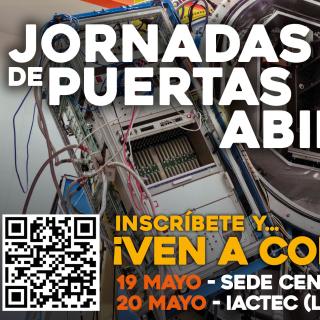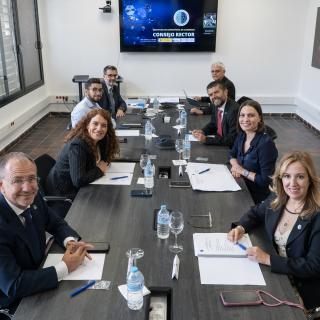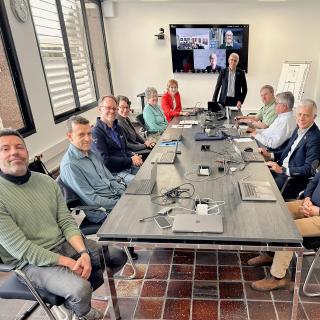As it does every year, The IAC has organized its XV Canary Islands Winter School of Astrophysics, which began yesterday, the 17th of November, and will go on through the 28th of November. It is taking place at the Conference Centre in Puerto de la Cruz (Tenerife), with the support of the Island Governments of the Canary Islands, the Spanish Ministry for Science and Technology, the European Solar Magnetometry Network (ESMN) and the European Space Agency (ESA), y with the collaboration of the Town Councils of Tenerife and Puerto de la Cruz. This year’s Winter School lectures are to be given by nine experts in space missions. There are 75 participants from 19 countries that are currently preparing, or have recently completed their doctoral thesis in a subject related to the theme of this School. The school will include visits to the Instituto de Astrofísica de Canarias in La Laguna and to the Teide Observatory (Tenerife). The written version of the lectures will be published at the closing of the Winter School.
In the activities that have been scheduled, professor André Balogh, from the Blackett Laboratory of the Imperial College (United Kingdom), will give a talk on November 18th, from 19:30 to 21:00 at the Museo de la Ciencia y el Cosmos, of the Organismo Autónomo de Museos y Centros del Cabildo de Tenerife. The conference, in English, but with a simultaneous introduction, is called “Space Storms.” In it, the interaction between solar mass ejections and the magnetosphere and ionosphere will be explained. These interactions affect terrestrial and orbital technological systems and create Aurorae.
Exploring the Universe
For hundreds of years, telescopes were the only available instruments to study the Cosmos. Even nowadays, probes are only able to reach our closer neighbours in space. For this reason, scientists continue to depend on telescopes to learn about the origin of the Universe, the formation and evolution of galaxies, stars and planetary systems and the necessary conditions for life.
A great majority of telescopes are optical, that is, they magnify visible light emitted by objects in the Universe. However, this is only a small part of the electromagnetic spectrum. Celestial bodies emit other types of electromagnetic radiation as well, such as radio waves, microwaves, IR radiation, UV light, X-rays and Gamma rays. Most of the telescopes are terrestrial, so they only receive a small fraction of the total radiation, because the atmosphere absorbs a great part of it. In order to overcome this problem, scientists have begun to send telescopes into space, where they are able to collect great quantities of information from other regions of the spectrum. “Thanks to the fast technological advances in Astrophysics and Optics, and especially with the birth of the Space Age, nowadays it is possible to observe wavelengths of the whole spectrum,” says Valentín Martínez Pillet, investigator at the IAC and coordinator of this School.
Space Experts
One of the most important aspects of the Winter School is that the professors that have been invited are investigators that have been directly involved with the latest advances in their field: the Space Sciences. This year, there are nine astronomers that have been involved in the design, creation, launching and investigation of probes, satellites and telescopes from different space agencies (ESA, NASA…). In the lessons, different subjects relevant to space exploration, like observation at different wavelengths and the proposal of missions, probes and the necessary instrumentation to obtain the desired information.
Courses and Professors at the Winter School:
- “Measurement of electromagnetic fields and particles in space”
André Balogh, The Blackett Laboratory, Imperial College (United Kingdom)
" X-ray and Gamma instrumentation"
Xavier Barcons, Instituto de Física de Cantabria (CSIC-UC) (Spain)
- “Planetary observations and landers”
Angioletta Coradini, CNR-IASF (Italy)
- “EUV and UV imaging and spectroscopy from space"
Richard Harrison, Rutherford Appleton Laboratory (United Kingdom)
- “Design issues for space science missions”
Yves Langevin, Université Paris-Sud (France)
- “Space infrared astronomy”
Mark McCaughrean, Astrophysikalisches Institut Potsdam (Germany)
- “Spacecraft and ground segment”
Gerard Schwehm, ESA-ESTEC (Netherlands)
- “Visible light telescopes and instruments for space observations”
Michael Perryman, ESTEC (Netherlands)
Thierry Appourchaux, ESA-ESTEC (Netherlands)
Other scientists that will be participating in the School:
Á lvaro Giménez, RSSD.ESA-ESTEC (Netherlands)
José Miguel Rodríguez Espinosa, IAC-GTC (Spain)
Registrar: At the centro de Congresos del Puerto de la Cruz, tel: 922 37 40 58.
More information at: XV Winter School of Astrophysics: “PAYLOAD AND MISSION DEFINITION IN SPACE SCIENCES"


